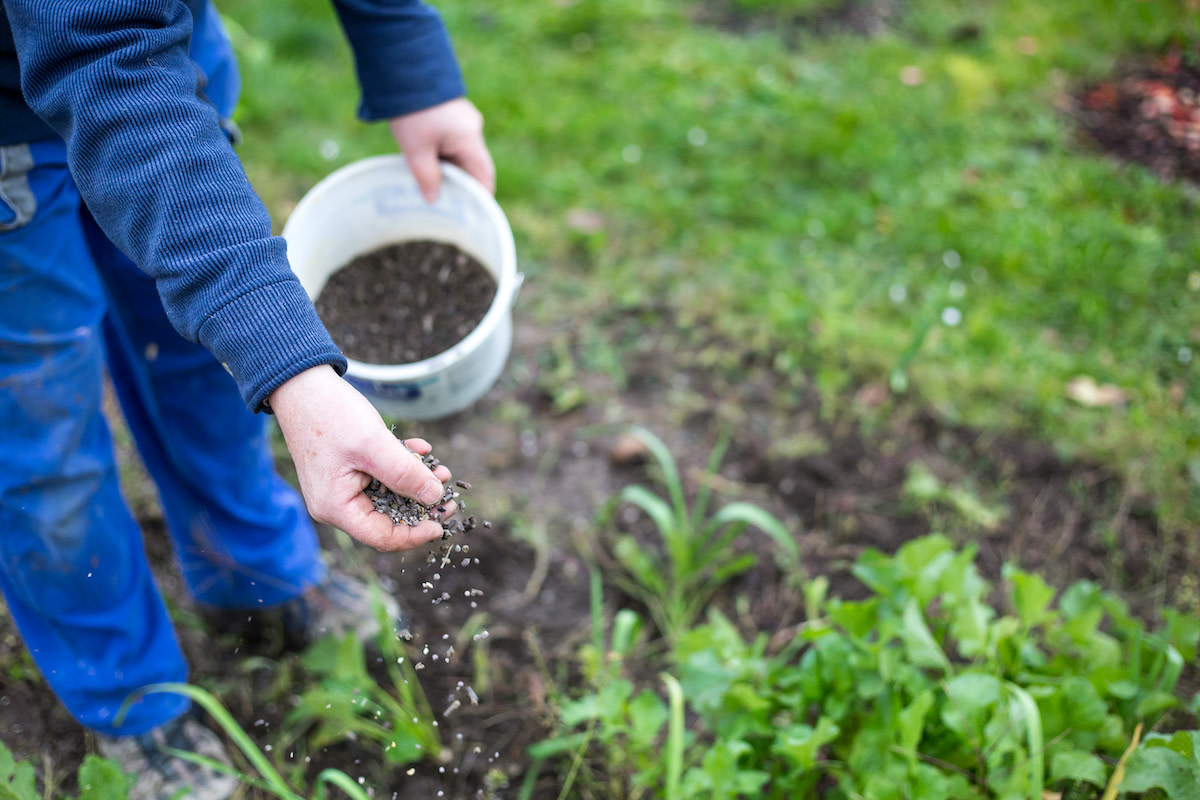Slow-Release Fertilizer: Steps for Fertilizing Plants With SRF
Written by MasterClass
Last updated: Dec 20, 2021 • 3 min read
You can consider trying some slow-release fertilizer this growing season to green up your garden and nourish plant growth. Learn more about how this kind of fertilizer helps plants flourish on their own schedule.
Learn From the Best
What Is a Slow-Release Fertilizer?
Slow-release fertilizer (SRF) is a type of plant food gardeners use to feed their plants over a longer period of time than fast-release fertilizer would require. SRF is a helpful lawn care tool and a means to boost the health of new plants indoors. This type of fertilizer facilitates and assists both visible plant growth and underground root growth.
How Does Slow-Release Fertilizer Work?
Slow-release fertilizer works by introducing micronutrients and microbes to the soil. The release of these plant nutrients helps root development and encourages plant health overall in accordance with soil temperatures and soil conditions. Rather than deluging your plants with all these nutrients at once—as in the case of quick-release fertilizers—SRFs begin this sort of microbial activity much more gradually.
4 Types of Slow-Release Fertilizer
Deciding on a type of fertilizer means assessing what you need for your garden specifically. Consider these four options to land on the right fertilizer for you:
- 1. Controlled-release fertilizer: Abbreviated CRF, controlled-release fertilizers rely on an innate mechanism within the fertilizer itself to release its nutrients rather than anything happening in the soil. These time-release fertilizers are useful for those who know exactly when their plants need food over a sustained period of time.
- 2. Granular fertilizer: Held in granules or pellets, granular fertilizer is a water-insoluble fertilizer with a slow release rate. The pellets’ solid structure helps inhibit leaching (runoff of fertilizer during rain or routine watering) by maintaining their position in the soil.
- 3. Liquid fertilizer: Water-soluble slow-release nitrogen fertilizer might not be as common as fast-release liquid fertilizer, but it is available. These liquid formulations release nutrients on a more gradual basis than is typical of a water-based fertilizer.
- 4. Natural and organic fertilizer: These fertilizers comprise organic materials like mulch, kelp, compost, bone meal, and the like. If you prefer organic gardening to chemical intervention, this choice enables you to ensure the gradual release of nutrients without any synthetic byproducts.
5 Common Nutrients in Slow-Release Fertilizer
Slow-release fertilizer provides necessary nutrients to help your plants grow. Here are five of the most common:
- 1. Calcium: This mineral ensures your plants’ leaves, fruits, and flowers grow strong and durable. Although calcium isn’t one of the primary ingredients in the most common fertilizers, it’s still included in many mixtures.
- 2. Magnesium: Boost the chlorophyll in your plant’s health with some supplemental magnesium. This mineral assists with the photosynthesis process.
- 3. Nitrogen: Perhaps the most common fertilizer ingredient, nitrogen comes in a host of different blends, like ammonium nitrate and methylene urea. It’s fundamental to plant growth and health.
- 4. Potassium: Potassium, as well as the potassium-rich potash, will provide your plants with some extra help fighting off pests and diseases. A healthy potassium level in your fertilizer can increase plants’ longevity.
- 5. Phosphorus: This mineral helps your plant at every phase of its life, from seed generation to root development to maturation.
3 Steps to Using Slow-Release Fertilizer
When planting time comes, you should know how to use your slow-release fertilizer. Consider following these three simple steps:
- 1. Consider the specific plant life. What kind of slow-release fertilizer you use depends on what types of plants you’re nurturing. For instance, you shouldn’t use turfgrass or lawn fertilizer on a flower bed of hydrangeas and rhododendrons. Whether for annuals or perennials, houseplants or outdoor plants, vegetable gardens or grass lawns, you should seek one tailored to your needs.
- 2. Do a soil test. By testing your soil, you can find out what nutrients and amendments it needs to help your plants thrive. While all-purpose fertilizers are available, the more specific the formulation for your unique requirements the better. Doing a soil test can help you determine the amount of fertilizer you’ll need, what NPK ratio (the proportion of nitrogen, phosphorus, and potassium) will best help your plants grow, and how fast or slowly your fertilizer should release.
- 3. Start fertilizer application. Apply the synthetic chemicals or organic matter to your garden. You can use multiple different slow-release fertilizers in different sections to feed each plant a specific formulation suited to its health. Use a spreader or another gardening implement to get the fertilizer all over the section of soil, and turn it over in the ground, especially if you’re using a granular variety.
Learn More
Grow your own garden with Ron Finley, the self-described "Gangster Gardener." Get the MasterClass Annual Membership and learn how to cultivate fresh herbs and vegetables, keep your house plants alive, and use compost to make your community—and the world—a better place.
